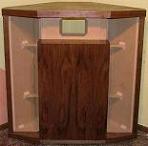
Originally Posted by
ToneJockey

I have what I think is a basic question for some of the more knowledgable members here. I was in a discussion with a peer when the subject of low frequency wave (bass tones) came up. From what I thought I knew on the subject is that
1. Bass frequencies (say under 40 hz) will not develop (properly)in small rooms because of the length of the wave.
2. If they do develop (under the proper conditions) they would travel farther than higher frequencies.
My questions are
Will smaller speakers say the JBLs LSR4326P or any near field monitors be able to reproduce these frequencies.? My friend has a set of small speakers and said that he could not hear the bass very well but when he stepped out of the room into a room farther away, the bass made itself known.
He is under the impression that high frequencies travel farther than low. I told him that I believe the lower ones travel farther because of their increased length which causes them to be reflected less. Is this a correct view?
Thanks for helping with our education in the physics. When I entered this phrase into google I got every kind of medium except air!



 Reply With Quote
Reply With Quote





